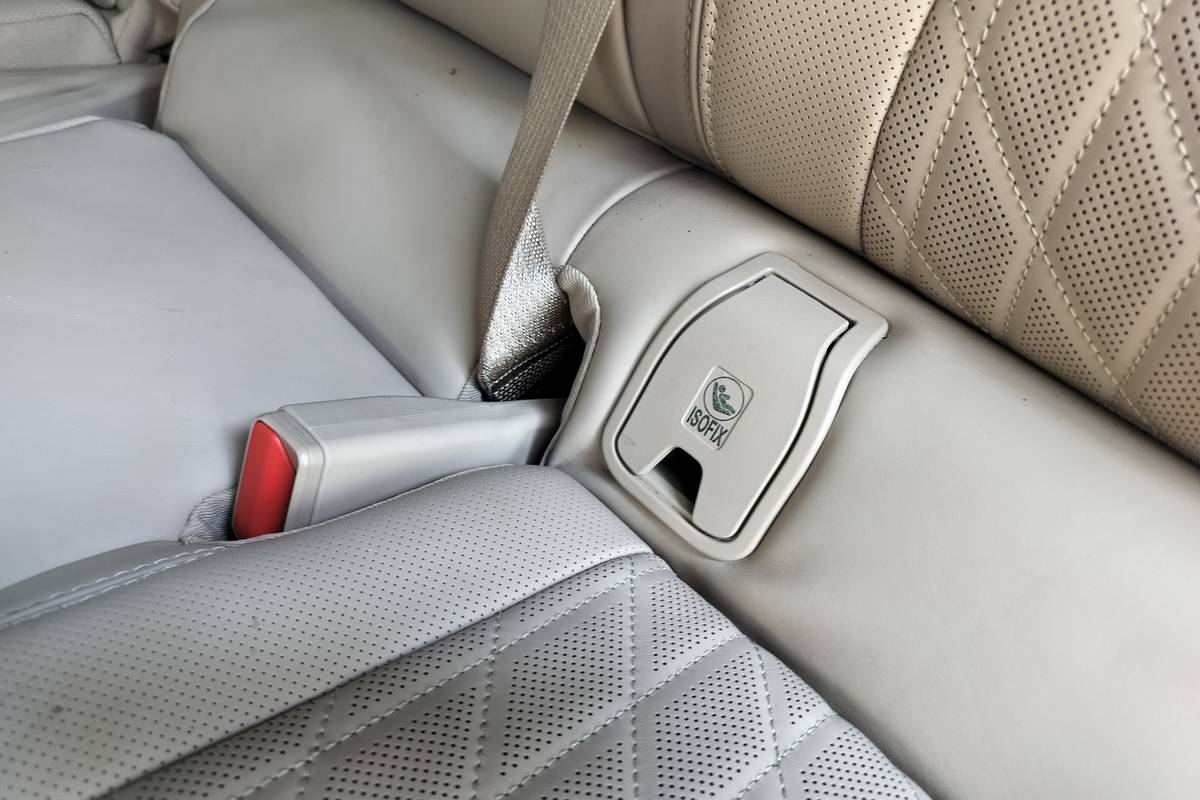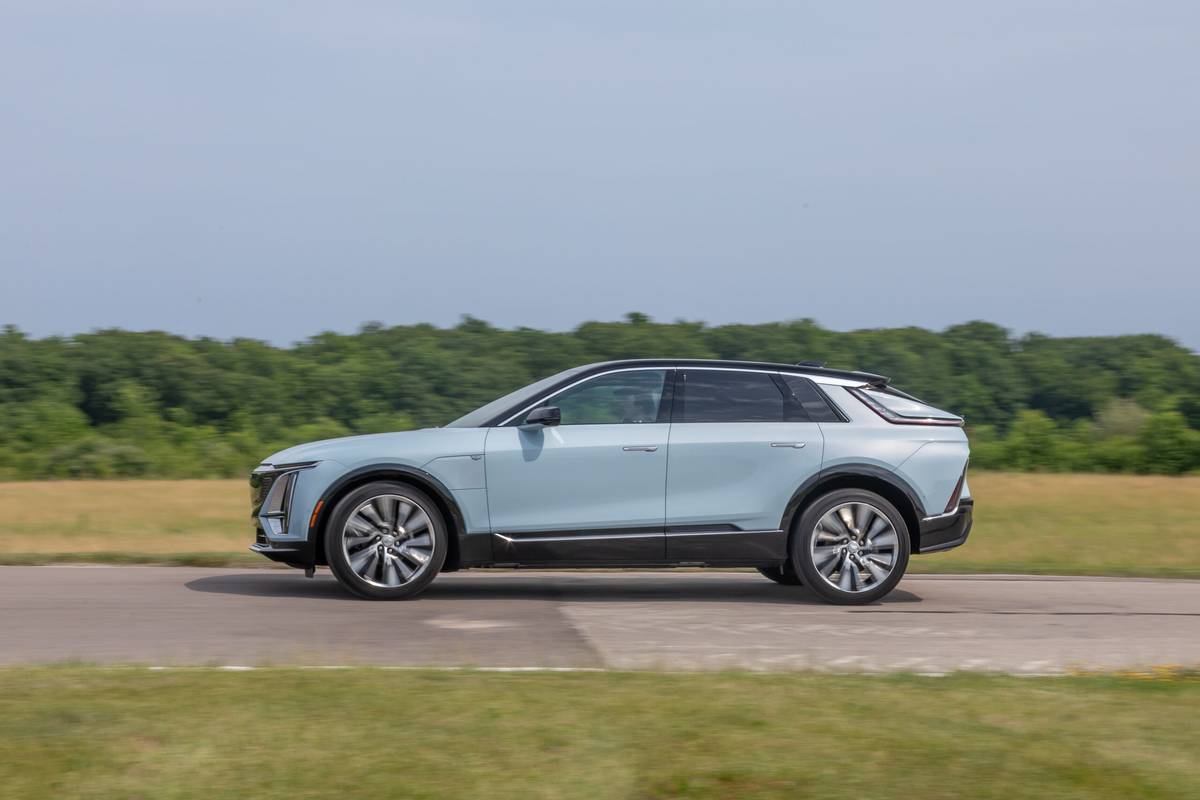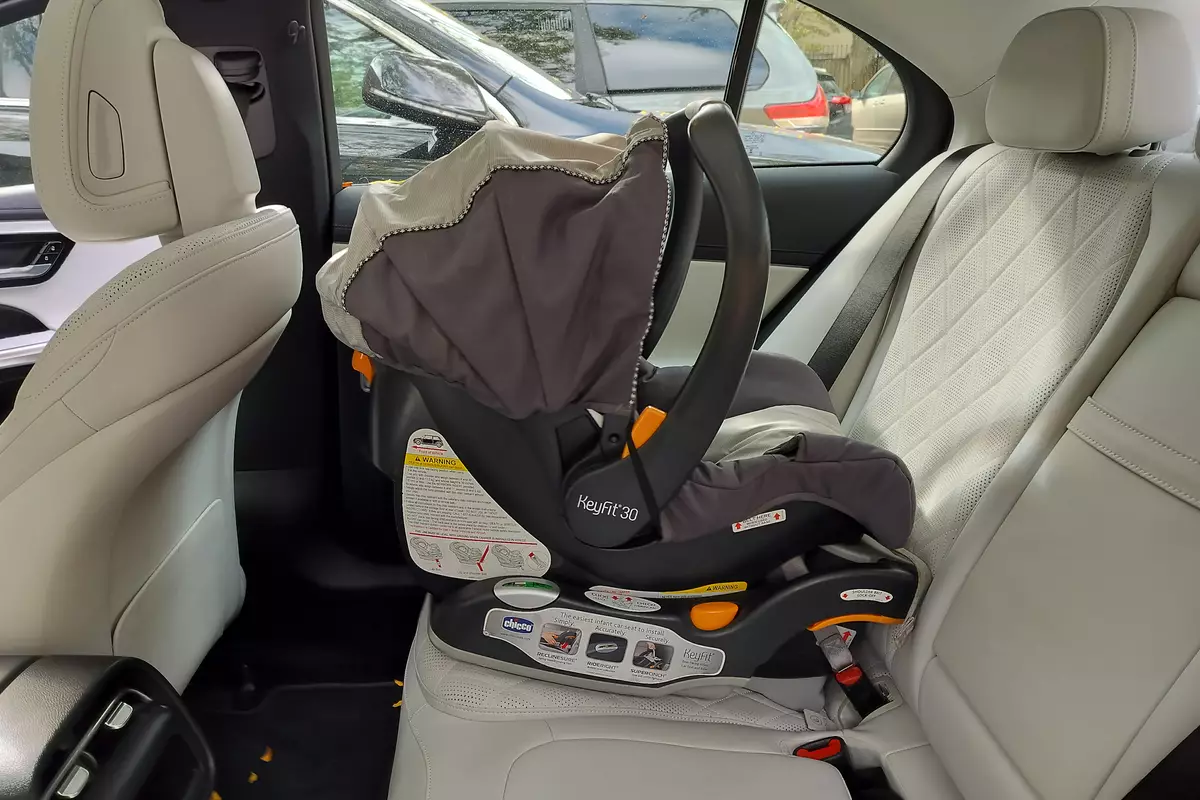Mother Proof's view

With the exception of a few minor issues here and there, the 2011 Toyota Prius is an easy-to-drive, little-family-hauling green machine. By little family, I’m referring to those of us with no more than two children. I tried squeezing three into the backseat — two in booster seats and a munchkin squeezed in the middle. It can work in a pinch, but I wouldn’t recommend it on a regular basis.
Once you get the hang of the unconventional gearshift — to put the Prius in Park you must press a button rather than use the gearshift — you’re off on a smooth ride. In Eco Mode, the most-efficient drive mode, the Prius feels relaxing to drive. It takes off nice and easy from a stop, but definitely isn’t in a hurry to get anywhere fast. If you’re feeling a need for some get up and go, you can slip into Power Mode and have a little more aggression and responsiveness from the accelerator. Of course, you’ll have to pay for it in the form of fuel mileage, which will be reduced from the EPA-estimated 51/48 mpg city/highway. In both modes, the Prius gives you just enough road feedback without being overpowering or obnoxiously bumpy.
There’s also an EV-Drive Mode, which I found almost useless. It allows you to drive in electric-only mode for up to a mile, but only if the battery is fully charged.
My biggest annoyance with the Prius is something that’s fixable. When in Reverse, the Prius emits a constant beeping tone to remind you that you’re in Reverse. It alarmed me ever time it went off since I’m used to a similar beeping tone with rear park assist sensors alerting me that I’m about to hit something. On top of that, the actual tone is loud and high-pitched. This is something that can be deprogrammed with a trip to the dealership.
My other problem with the Prius — well, actually my daughter’s problem — was the amount of road noise intruding into the cabin. To a large degree, I didn’t notice it when tooling around town by myself; however, for my daughter and me to carry on a conversation while driving on the highway, she had to raise her voice to a near shout from the backseat so I could hear her. She commented more than once on how annoying that was for her.
The 2011 Prius starts at $23,520. My test car, a midlevel trim Prius III, cost $26,740.
EXTERIOR
Way back when the Prius first hit the market for the 2001 model year, I thought it was futuristic looking, like something straight out of “The Jetsons.” The Prius’ exterior hasn’t really changed much since then. There’ve been a few modifications here and there to improve the proportions and aerodynamics, but the overall look is generally the same. That’s great from a brand-recognition perspective, but the Prius needs a modernizing face-lift to maintain the design edginess we first associated with it.

If I only had one or two kids, the Prius would be just the right size for me. The step-in height is low enough for most youngsters to open the doors easily and clamor in and out without pause. The hatchback design creates a lot of usable cargo space. There’s enough room back there for grocery trips, luggage for a short weekend getaway or even a light load from the warehouse store.
With a 1.8-liter inline-four-cylinder engine paired with an electric motor, the Prius makes a total of 134 horsepower. That’s enough juice to get around town without overindulging in natural-resource-draining power. Unlike electric vehicles, you don’t plug the Prius in, though a plug-in Prius is coming in the near future.

SENSE AND STYLE
Family Friendly (Not Really, Fair, Great, Excellent): Fair-Great
Fun-Factor (None, Some, Good Times, Groove-On): Some
INTERIOR
The first thing I noticed when jumping into the Prius is the simplicity of the interior design. Toyota has put plenty of time, energy and money into the hybrid technology powering the vehicle, yet the inside stays plain-Jane basic. Dare I say, it’s economical looking.

My test car had Bisque-colored upholstery and hard plastic surfaces. Combine that with the (yawn) beige, I mean, Sandy Beach exterior and you have nearly the most boring color scheme available. There is, however, a certain peace that comes with driving a car this visually clean on the inside.
There isn’t too much in the way of storage compartments or nooks and crannies inside the Prius. There’s a cupholder accessible up front, and a second one stashed inside the smallish dual-level center console. A single bottleholder sits in each of the front doors, and there are two cupholders in the fold-down armrest in the backseat. I found myself wishing for larger in-door storage pockets in the front row and more storage on any sort for the kids to use in back. There are two glove boxes and an open area under the center stack, which I guess is supposed to compensate for the lack of backseat storage.
I appreciated the steering-wheel-mounted audio controls that pop up in a head-up display on the windshield when you touch them. This shows you which control you’re using without requiring you to look away from the road. My Prius III test car didn’t have a lot of available features, with the exception of the optional $1,930 Navigation Package that also added Bluetooth phone and streaming audio as well as a backup camera.
The most impressive thing about the Prius’ interior is its fish-bowl-like feeling. From the wide-open rear view you get with the split-glass hatch to the near-perfect forward visibility, thanks to the huge expanse of front windshield glass and extra mini windows in front of the side mirrors, the Prius gives you a great view of the road.
IT’S THE LITTLE THINGS THAT COUNT
Storage Compartments (Puny, Fair, Ample, Galore): Puny-Fair
Cargo/Trunk Space (Puny, Fair, Ample, Galore): Ample
SAFETY
The 2011 Prius has received the top score of Good in frontal-offset, side-impact and rear crash tests conducted by the Insurance Institute for Highway Safety. It hasn’t yet undergone the latest roof-strength crash test.
While the Prius’ seat belt buckles in the backseat are on stable bases, a feature I typically appreciate, they don’t stick up very high from the seat cushion, making it tough for little ones to buckle up by themselves. It also allows migrating booster seats to inch their way over the top of the seat belt buckles. Ugh! Then I have to get out of the driver’s seat, open up the rear door and try to scooch the booster seat — along with the 50-pound child perched on top — back into position.
For those using the Latch system to install child-safety seats, there are two sets of lower anchor points (in the outboard seats). They are deeply recessed into the seat bight, where the back and bottom cushions meet. However, when equipped with fabric seating upholstery, you can easily maneuver your hand inside the seat bight to fish for the anchor. Find out how the 2011 Prius fared in MotherProof.com’s Car Seat Check.
The beeping tone I mentioned earlier in this review, the one that sounds constantly while in Reverse, is theoretically a safety feature to help you know you’re backing up since the gearshift is somewhat unconventional. I’d argue that it’s more of a safety hazard. It was distracting and kept me from focusing on what I was doing.
The Prius has standard front-wheel drive, all-disc antilock brakes, traction control, an electronic stability system and seven airbags, including a driver’s knee airbag and side curtain airbags in both rows. It has optional radar-based adaptive cruise control, lane departure warning system and a pre-collision system.
Get more safety information about the 2011 Toyota Prius here.


Former Senior Family Editor Kristin Varela blends work and family life by driving her three tween-teen girls every which way in test cars.
Latest news



